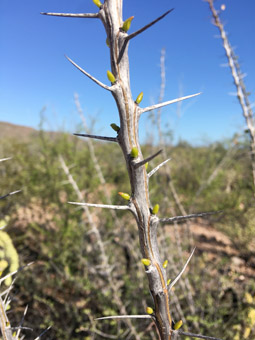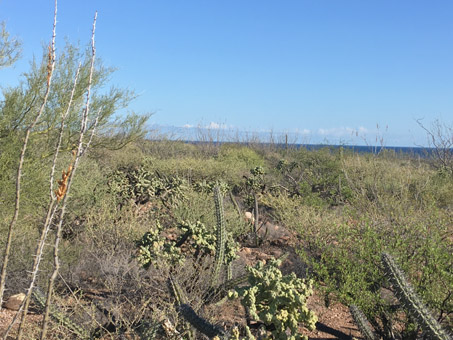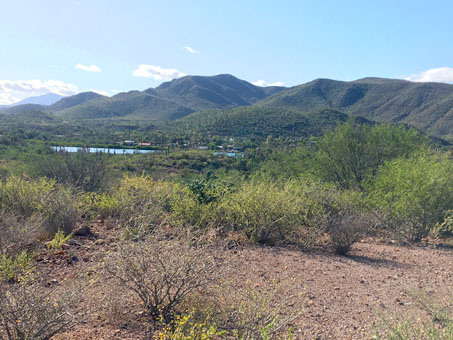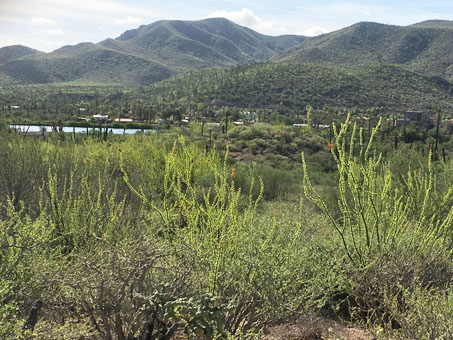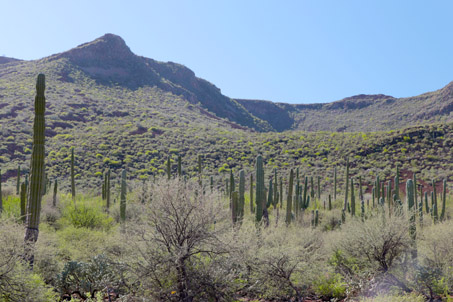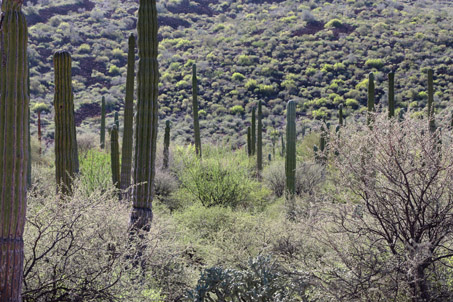BEE JAN 2020
Mulegé After the Rains — Nov-Dec 2019
A typical stereotype held about the desert is of a dry, sandy, desolate place with little vegetation. My childhood memories of the southern California desert are filled with flat, dry plains scattered with Joshua trees and Cresotebush and little else.
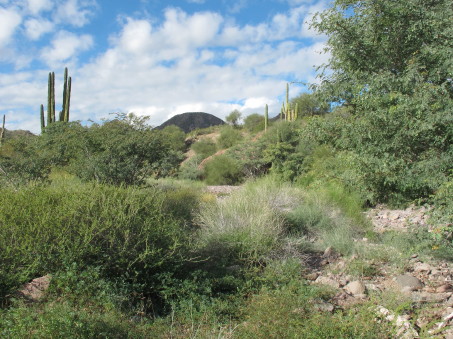 But Baja California's Sonoran Desert is far from being either of these things. It is considered the most botanically diverse of North America's four deserts, and the farther south one goes, the more abundant and diverse the vegetation becomes.
But Baja California's Sonoran Desert is far from being either of these things. It is considered the most botanically diverse of North America's four deserts, and the farther south one goes, the more abundant and diverse the vegetation becomes.
Knowing this, and because it was already pretty green, I was very motivated to get out into the field as soon as possible after we arrived in Mulegé to see what might be growing in our area. This month, I cover our various field trips around Mulegé and Bahía Concepción, while next month, I'll share images from our trip farther southward to Loreto and the Sierra la Giganta.
In mid November, the entire southern peninsula was treated to lots of rainfall over about a week long period. Flooding occurred in the far south around Los Cabos and La Paz, but those of us in the northern part of the state saw mostly light rain that actually had the chance to soak in.
Within days, the white Palo Adán (Fouquieria burragei) in the scrub near our place, which had shown absolutely no signs of leaves were already covered with leaf buds. This is due to their special idling metabolism that allows them to jump right into leaf or flower production within a few days, unlike most plants that take up to a week to just to get up to full photosynthetic capacity. Another 3 days and the Palo Adán were covered with fully formed leaves.
Other shrubs and trees were already green before the rain and only became more so in the following days. In the Mulegé valley, the red Palo Adán were putting their energy into flowers, rather than leaves. This species commonly flowers after just small amounts of rain any part of the year, while the white species puts it into leaves, and generally only flowers from July to October.
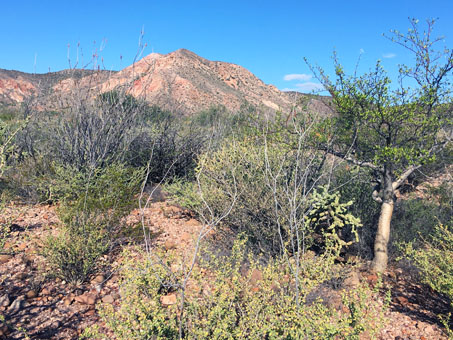
The bajada behind our place, Nov. 20th, two days after a good drenching rain that was able to soak in. Bare stems are Palo Adán.

The first year leaves of Palo Adán look like small arrow heads at the end of the petioles. The petioles will harden into permanent spines.

Same area, Nov. 23th.
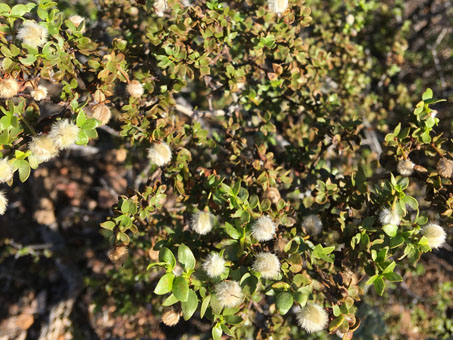
The Creosotebush (Larrea tridentata) showing its drought-stressed smaller, darker leaves and it's bright green new ones. Fruit is fuzzy.
We also went a about 10 miles south to Bahía Concepción, where it was also very green. There were lots of yellow and white butterflies flittering about (and hitting the windshield), tarantula hawks (in the genus Pepsis) feasting on the Milkweed plants (Asclepias subulata), and birds working along the shore.
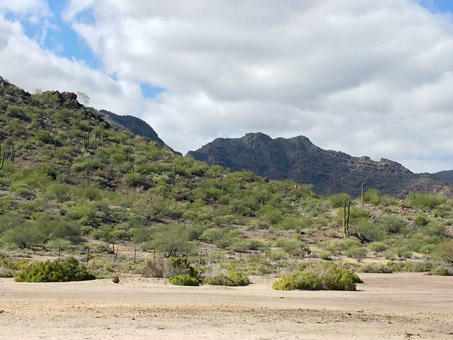
Posada Concepción. Foreground: the edge of a salt flat with Iodine Bush at the edges. Desert scrub starts just beyond the road/fenceline. The hills in the distance represent part of the eastern escarpment of the peninsula that ends here abruptly at the Bay.

A Great Southern White butterfly (Ascia monuste). They were flitting all over the saltflat and adjacent dunes, hardly settlling for long, and seemed especially drawn to the Boxthorn plants (Lycium brevipes) which were flowering profusely. From my photo collection, I see that this species seems common in our area.

A young Horse Purslane (Trianthema portulacastrum, Aizoaceae). This is a common and abundant summer annual that often persists well into the new year. This ground cover often forms large mats.
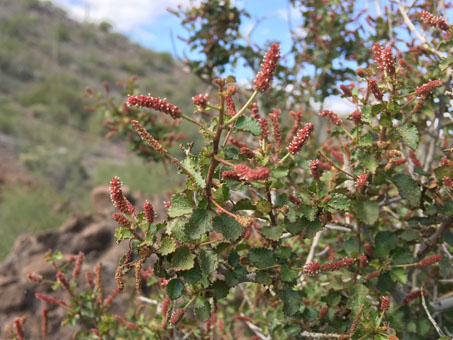
Bahía Concepción Copperleaf (Acalypha saxicola, Euphorbiaceae) is a local endemic shrub, restricted to rocky slopes around the Bay. The spikes are male flowers (white dots are anthers). The female flowers are located at the base of the spikes and have feathery styles/stigmas.
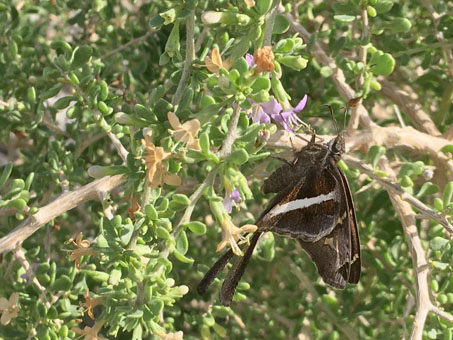
While trying to photograph the Whites, I was surprised by this amazing creature, a White-striped Longtail (Chioides albofasciatus). It didn´t flutter all over, but moved meticulously from flower to flower around the plant. It was fairly easy to photograph as it sat still often and seemed unperturbed by my presence. There were also many sulphur butterflies, skippers, and Tarantula Hawks.
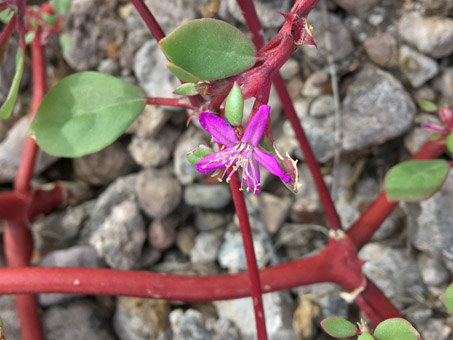
The stems and leaves of Horse Purslane are succulent, the flowers 1-2 cm D. Dead stems are tan or black and with the rain, the new red stems can be seen reaching out everywhere with the latest rain.
Bahía Concepción
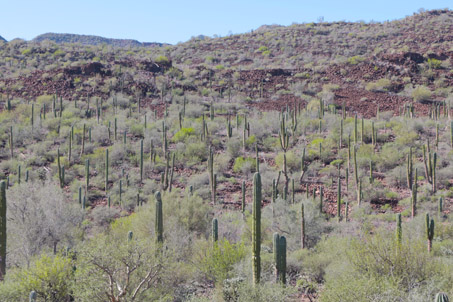
Talus slopes south of Playa Coyote glow in the morning light. The bright green dots on the hills are very leafy Elephant Trees (Bursera hindsiana).
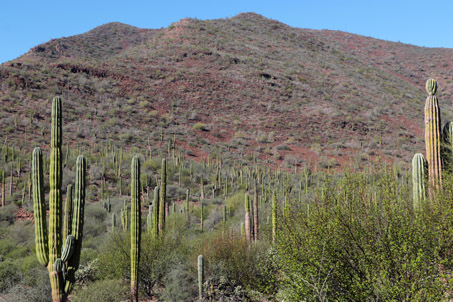
The trees and shrubs were so leafy that in places the way appears impassible through them.
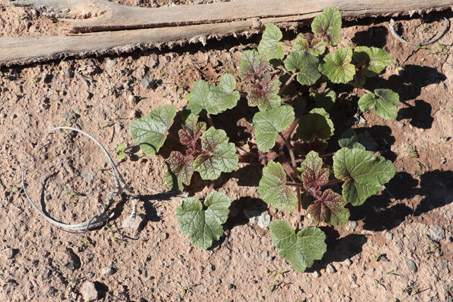
A young Devil´s Claw (Proboscidea altheifolia) plant with the old fruit on the left.
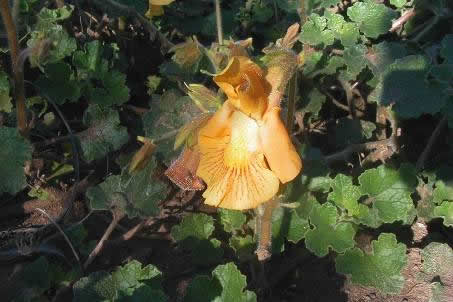
Another profusely flowering Devil´s Claw. This is a perennial that likes loose or sandy soils. The flowers are about 5-6 cm L.
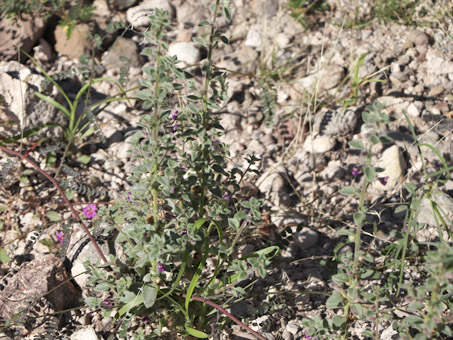
Canyon Snapdragon (Pseudorontium cyathiferum). According to CNPS it is considered "rare, threatened or endangered in CA" but grows here like a weed. One of our favorites.
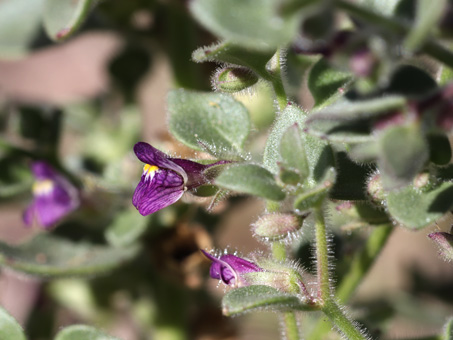
Canyon Snapdragon plants are from 20-60 cm H in general and flowers are 8-9 mm D. The hairs are tacky. It is very abundant this year but easily overlooked because the flowers are so small.
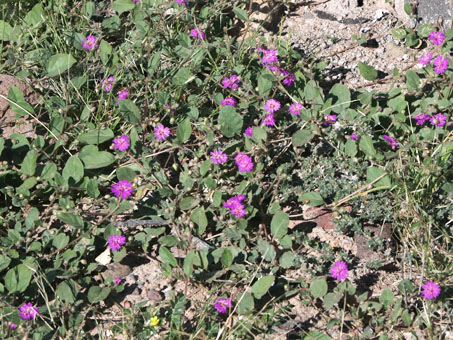
Windmills (Allionia incarnata), a prostrate, spreading groundcover common across the desert areas.
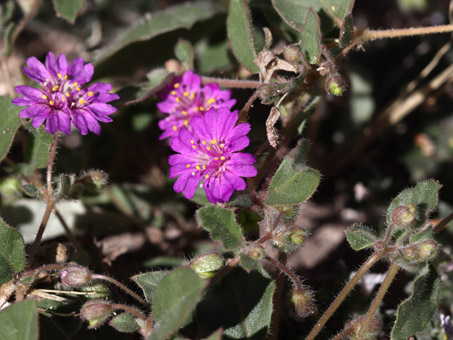
These are actually each a cluster of 3 flowers per involucre and measure about 1 cm D. The herbage is hairy and tacky.
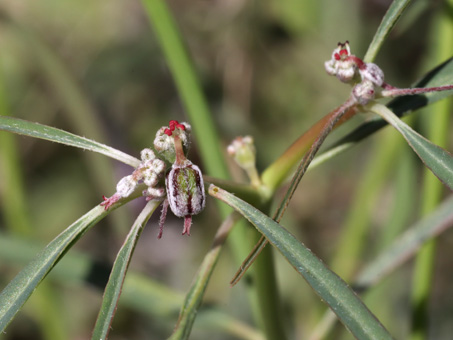
Beetlespurge (Euphorbia eriantha). The source of the common name is evident from the fruit pictured here. The fuzzy white circular structures are the top rim of the cyathia, Euphorbia's answer to an involucral.
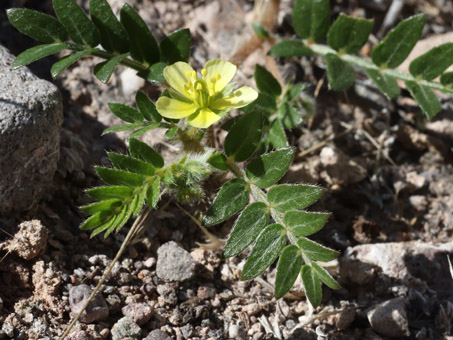
Goathead, Toritos (Tribulus terrestris). The flowers are about 1 cm D. This is a weed with nasty 3-5 parted hard, prickly fruit that spreads like the plague.
That's it for this month, but there's more to come. Until next time, hasta la próxima…
Debra Valov—Curatorial Volunteer
References
Rebman, J. P., J. Gibson, and K. Rich, 2016. Annotated checklist of the vascular plants of Baja California, Mexico. Proceedings of the San Diego Society of Natural History, No. 45, 15 November 2016. San Diego Natural History Museum, San Diego, CA. Full text available online.
Rebman, J. P and Roberts, N. C. (2012). Baja California Plant Field Guide. San Diego, CA: Sunbelt Publications. Descriptions and distribution.
Wiggins, I. L. (1980). The Flora of Baja California. Stanford University Press. Descriptions and distribution.



